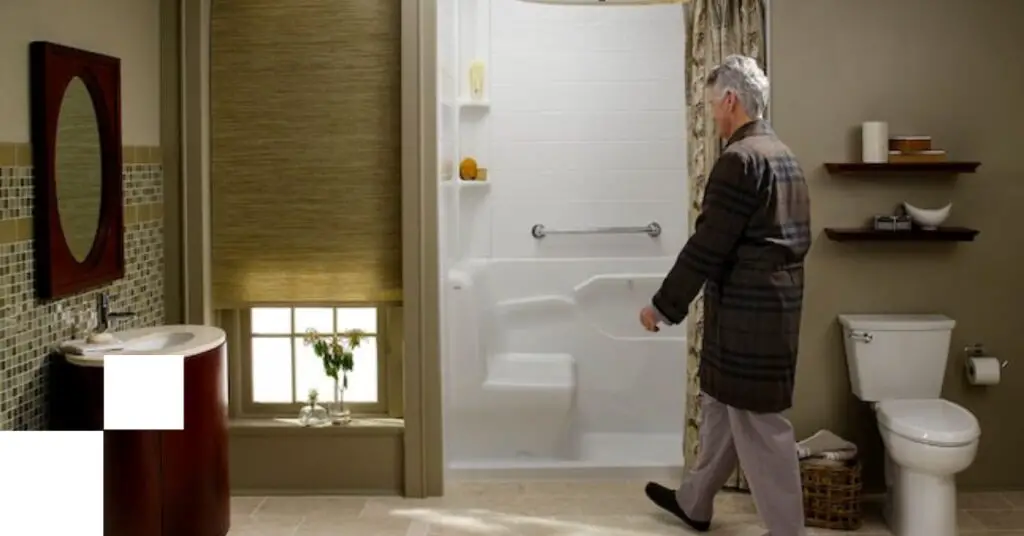As we age, maintaining independence and safety in our daily routines becomes increasingly important. One area of the home that often requires special attention is the bathroom, particularly the shower. Walk-in Showers for Seniors have emerged as a popular and practical solution, offering enhanced safety, accessibility, and comfort.
In this comprehensive guide, we’ll explore the benefits, features, and considerations of walk-in showers designed specifically for older adults.
Quick Links for Walk-in Showers For Seniors
Aquatique 60 X 32 Seated Shower Base
Quick tub Shower Conversion System For Seniors
American Standard 3060SH.LW 30-Inch By 60-Inch By 37-Inch Seated Shower
ANZZI Walk In Tub with Shower 27″ x 53″
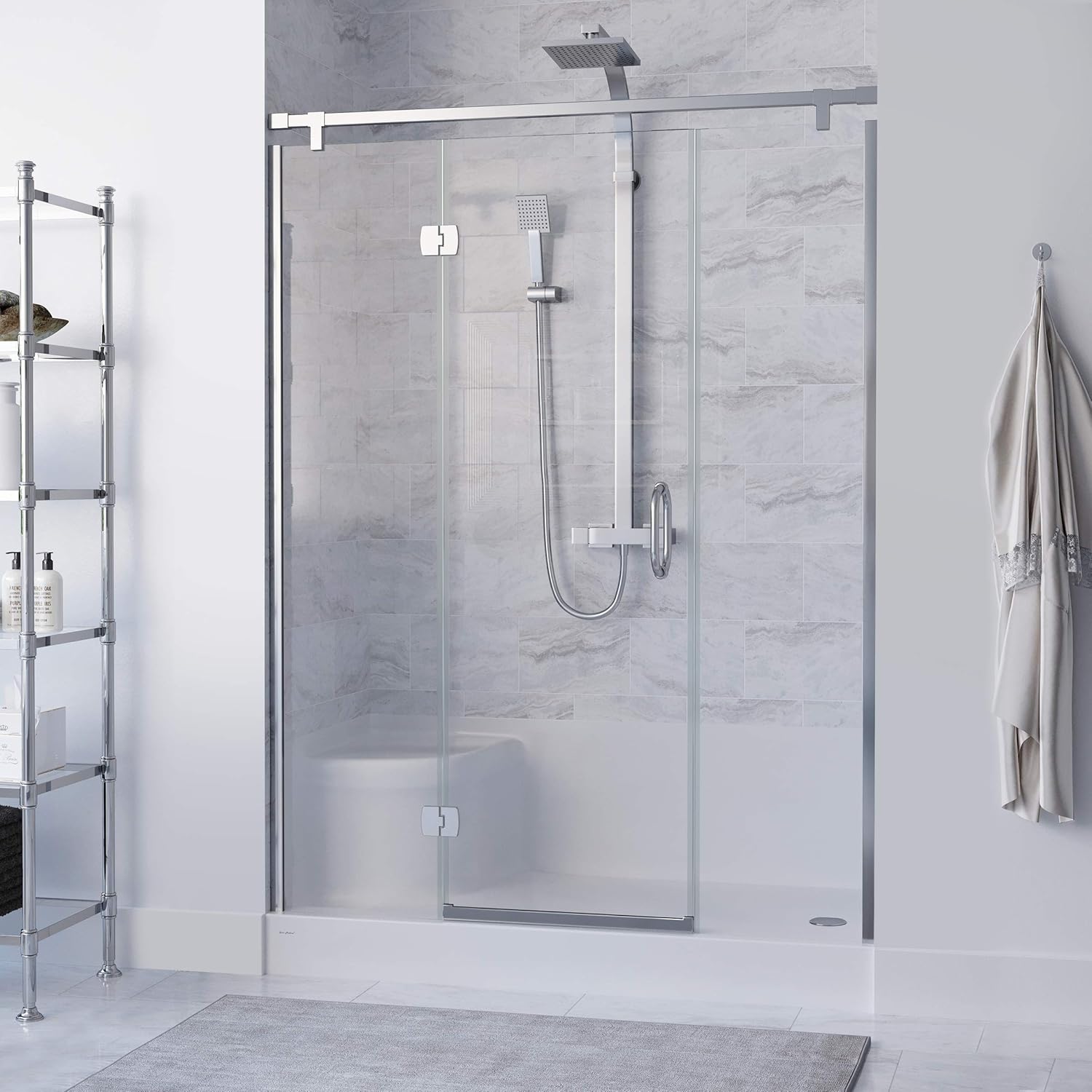
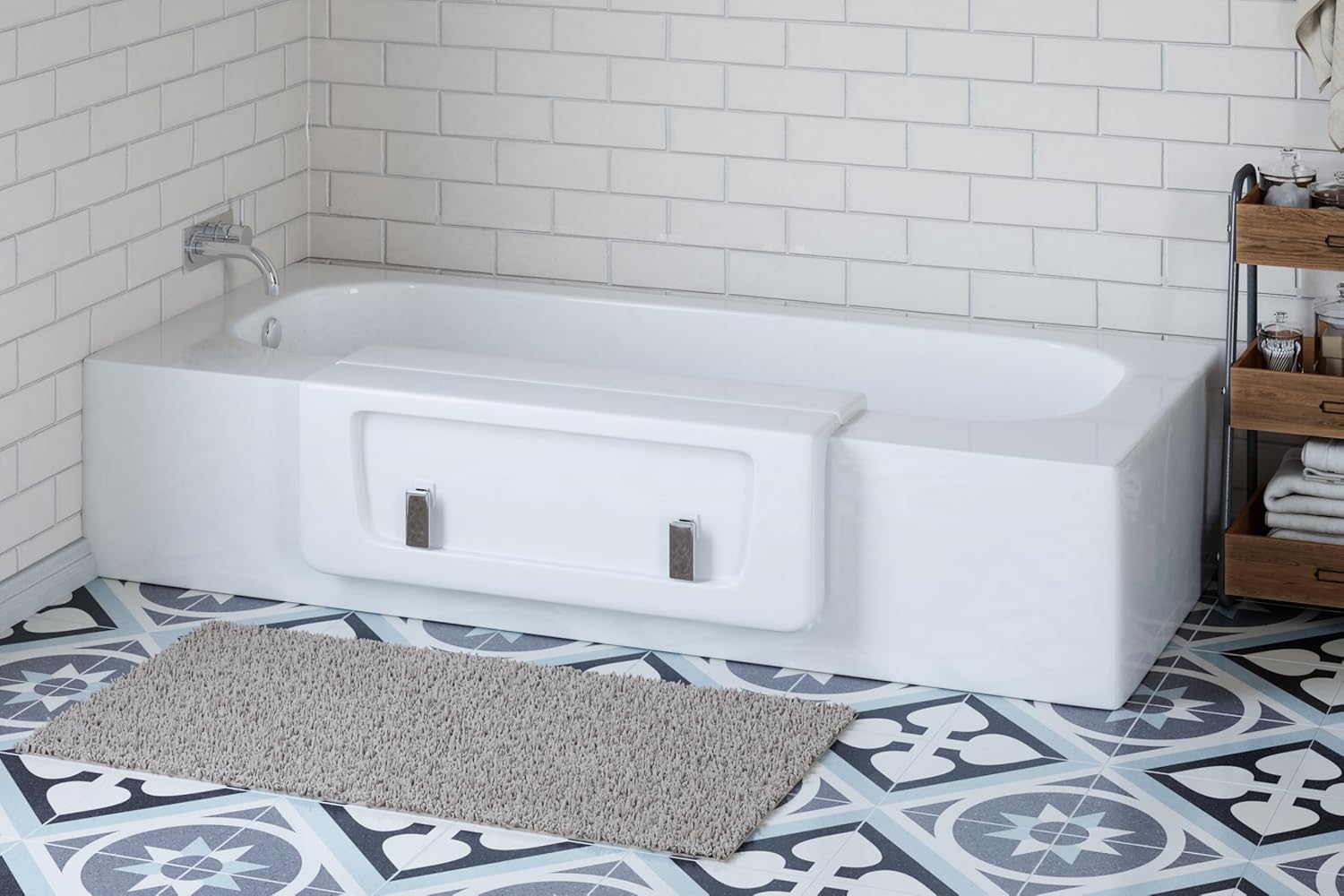
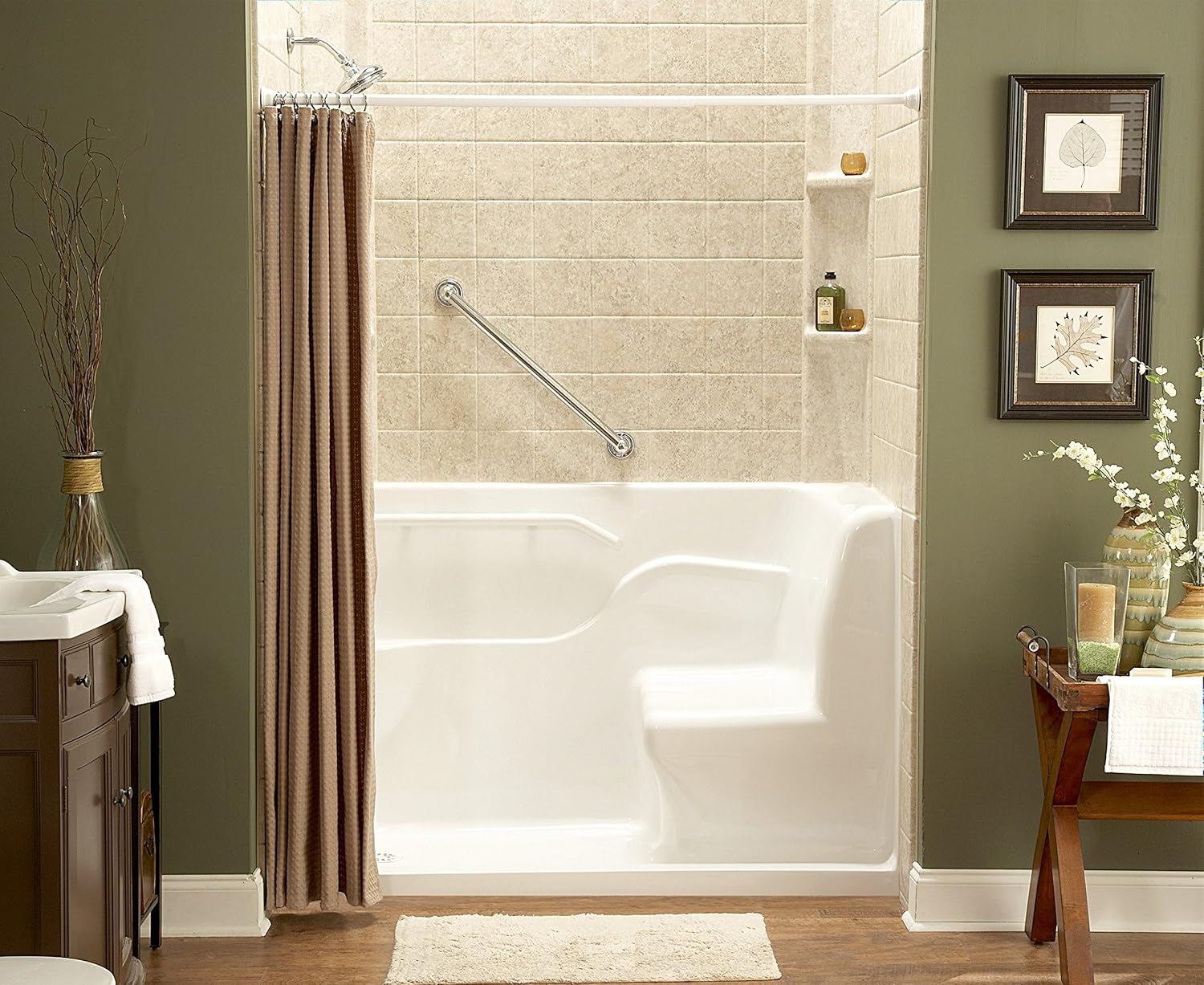
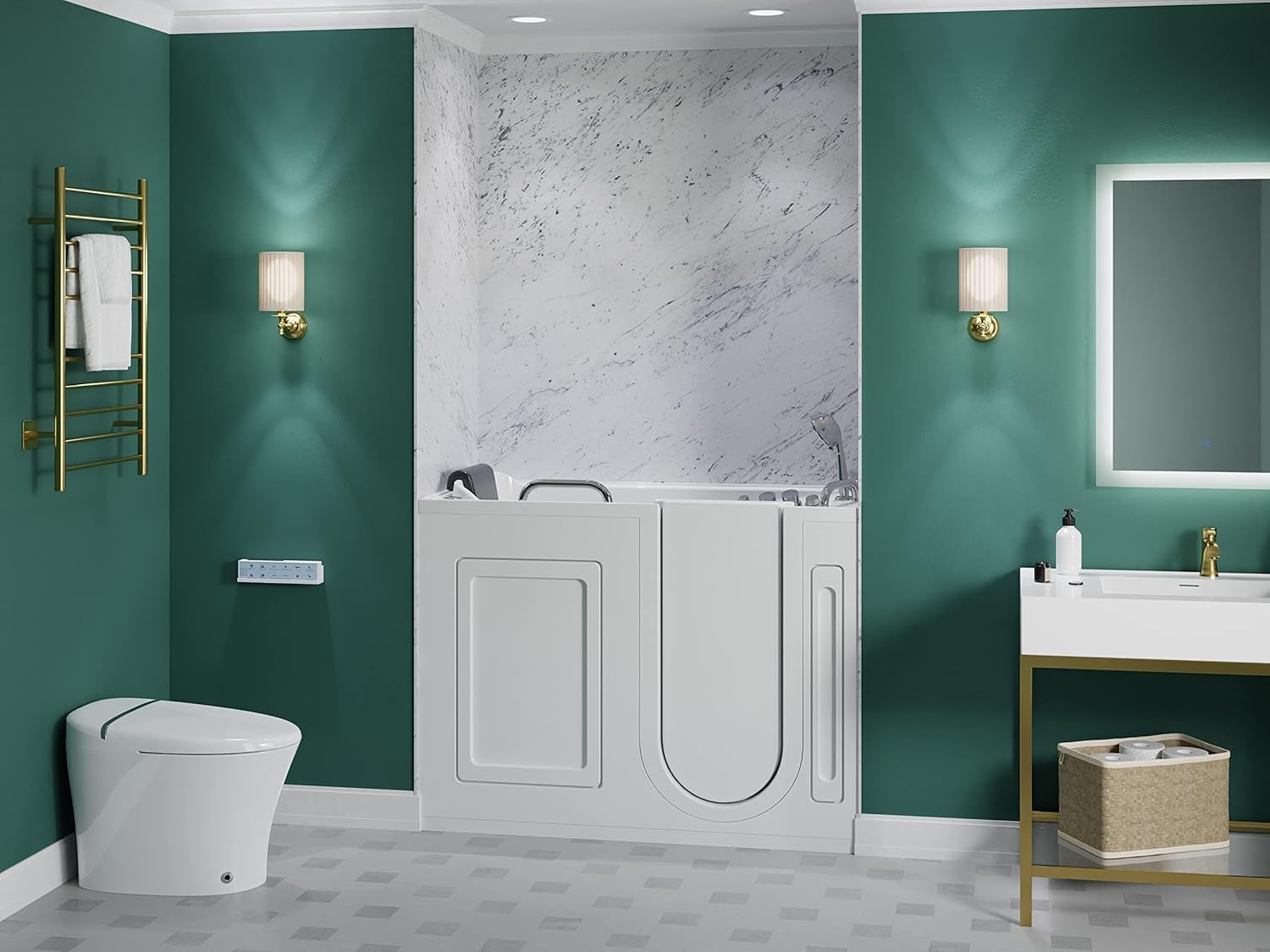
Understanding the Need for Senior Friendly Walk in Showers
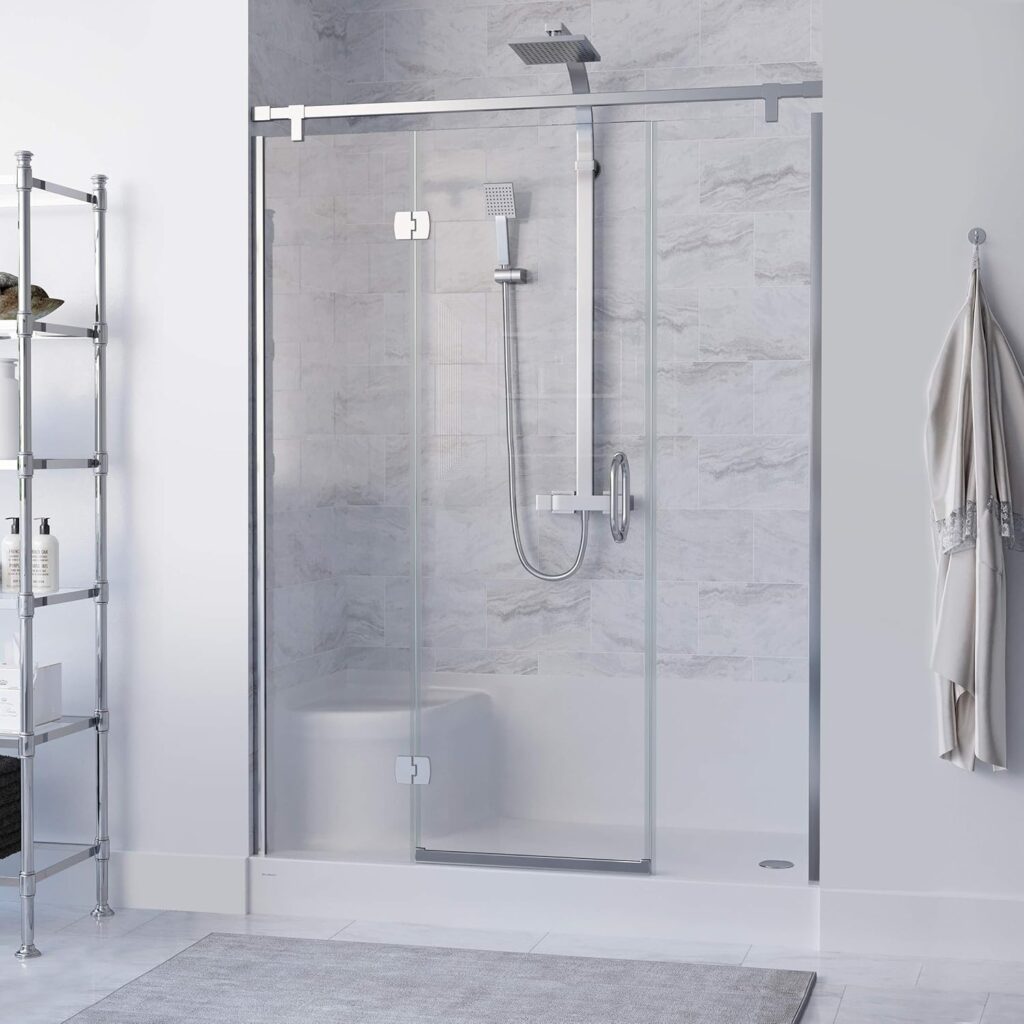
The Importance of Bathroom Safety for Seniors
The bathroom can be a hazardous place for seniors, with slippery surfaces and physical obstacles that increase the risk of falls and injuries. According to the Centers for Disease Control and Prevention (CDC), approximately 3 million older adults are treated in emergency departments for fall injuries each year, with many of these accidents occurring in the bathroom.
Traditional bathtubs and shower stalls can be particularly challenging for seniors with limited mobility, balance issues, or other age-related conditions. Stepping over a high tub wall or navigating a small, enclosed shower space can be daunting and dangerous. This is where walk-in showers for seniors come into play, offering a safer and more accessible bathing solution.
Benefits of Walk-in Showers for Older Adults
Walk-in showers designed for seniors offer numerous advantages over conventional shower setups:
- Improved safety: With low or no threshold entry, the risk of tripping is significantly reduced.
- Enhanced accessibility: Wider entrances and barrier-free designs accommodate wheelchairs and walkers.
- Increased comfort: Spacious interiors allow for easier movement and the option to use a shower chair.
- Better hygiene: Easy-to-clean surfaces and improved water drainage promote better overall cleanliness.
- Aging in place: These showers enable seniors to maintain independence in their own homes for longer.
Key Features of Walk-in Showers for Seniors
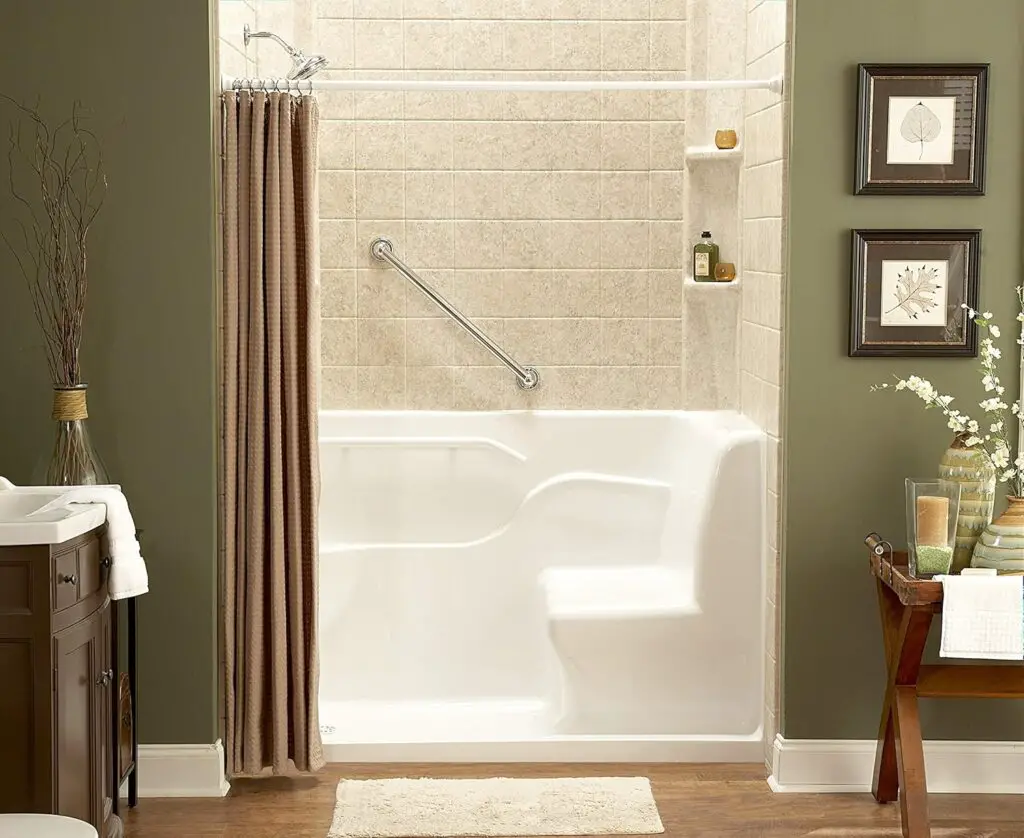
Low or Zero Threshold Entry
One of the most crucial features of a senior-friendly walk-in shower is a low or zero threshold entry. This design eliminates the need to step over a high ledge, making it easier and safer for seniors to enter and exit the shower. Some models feature a small lip of less than half an inch, while others are completely flush with the bathroom floor.
Non-Slip Flooring
Slip-resistant flooring is essential in preventing falls. Many walk-in showers for seniors incorporate textured surfaces or special non-slip materials to provide better traction, even when wet. Some popular options include:
- Textured tile
- Slip-resistant vinyl
- Rubberized flooring
- Pebble-style surfaces
Grab Bars and Safety Rails
Strategically placed grab bars and safety rails offer crucial support for seniors while entering, exiting, and using the shower. These features should be sturdy, securely mounted, and positioned at appropriate heights and locations based on the user’s needs. Some walk-in showers come with built-in grab bars, while others allow for customizable placement.
Handheld Showerheads
A handheld showerhead is a valuable addition to any senior-friendly shower. It offers greater flexibility and control, allowing users to direct water flow as needed. This is particularly beneficial for seniors who prefer to shower while seated or those with limited mobility. Look for models with:
- Long, flexible hoses
- Easy-to-grip handles
- Multiple spray settings
Built-in Seating
Many walk-in showers for seniors include built-in seating options, such as:
- Wall-mounted fold-down seats
- Corner benches
- Freestanding shower chairs
These seating options provide a place to rest and make tasks like washing feet or shaving legs much easier and safer. They’re especially important for seniors with balance issues or those who tire easily while standing.
Adequate Lighting
Proper lighting is often overlooked but is crucial for safety and comfort in a walk-in shower. Good lighting helps seniors see clearly, reducing the risk of accidents and making the bathing experience more enjoyable. Consider:
- Waterproof LED fixtures
- Motion-activated lights
- Natural light sources (if possible)
Choosing the Right Walk-in Shower for Seniors
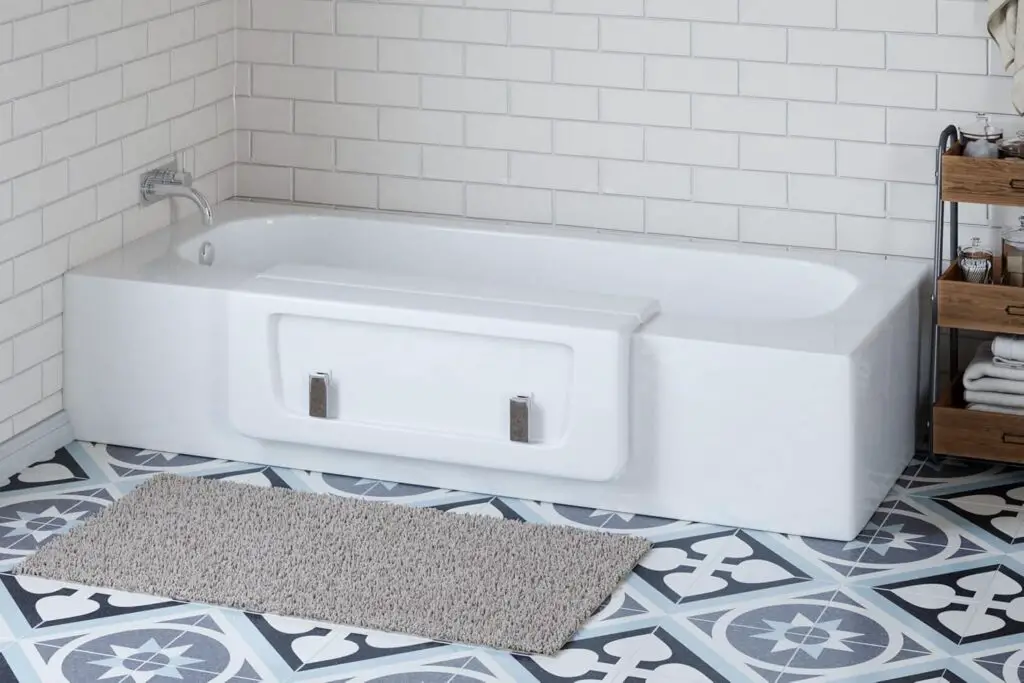
Assessing Individual Needs
When selecting a walk-in shower for a senior, it’s essential to consider their specific needs and limitations. Factors to evaluate include:
- Mobility level
- Balance and stability
- Visual acuity
- Cognitive function
- Existing health conditions
Consulting with a healthcare professional or occupational therapist can provide valuable insights into the most suitable shower features for an individual’s circumstances.
Considering Available Space
The size and layout of the bathroom will play a significant role in determining the most appropriate walk-in shower design. Options range from compact corner units to spacious, full-width showers. Some considerations include:
- Doorway width for accessibility
- Turning radius for wheelchair users
- Space for caregiver assistance (if needed)
- Storage for toiletries and assistive devices
Evaluating Installation Requirements
Installing a walk-in shower for seniors may involve significant modifications to the existing bathroom. It’s important to consider:
- Plumbing adjustments
- Electrical work for new lighting or heated floors
- Structural changes to accommodate a curbless design
- Waterproofing and proper drainage installation
Working with a professional contractor experienced in senior-friendly bathroom renovations can ensure that the installation meets safety standards and local building codes.
Budget Considerations
Walk-in showers for seniors can vary widely in price, depending on the features, materials, and extent of renovations required. When budgeting for this project, consider:
- The cost of the shower unit itself
- Installation expenses
- Additional features (e.g., custom grab bars, specialized flooring)
- Potential long-term savings from improved safety and independence
Maintaining and Caring for Walk-in Showers
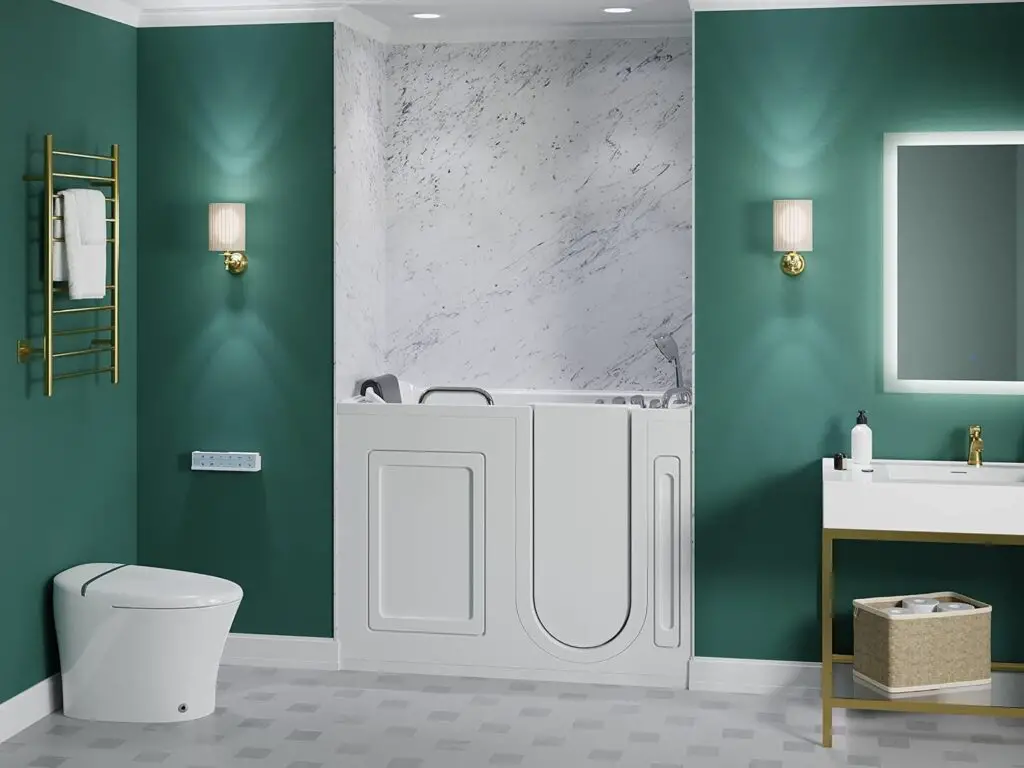
Regular Cleaning Routines
Keeping a walk-in shower clean is essential for both hygiene and safety. For seniors or their caregivers, establishing a regular cleaning routine can help maintain the shower’s functionality and appearance. Here are some tips:
- Use a squeegee after each use to remove excess water from walls and floors.
- Clean surfaces weekly with a mild, non-abrasive cleaner to prevent soap scum buildup.
- Pay special attention to corners and crevices where mold and mildew can develop.
- Regularly clean and disinfect grab bars and shower seats.
- Use a vinegar solution to remove hard water stains and mineral deposits.
Preventing Slips and Falls
While walk-in showers for seniors are designed with safety in mind, it’s important to take additional precautions to prevent accidents:
- Replace non-slip mats or decals if they show signs of wear.
- Ensure that grab bars remain securely fastened to the walls.
- Keep the shower area free of clutter and unnecessary items.
- Consider using a shower caddy to keep toiletries organized and easily accessible.
Maintaining Proper Drainage
Good drainage is crucial for the safety and functionality of a walk-in shower. To ensure proper water flow:
- Clean the drain regularly to prevent hair and soap buildup.
- Check that the shower floor maintains its slight slope towards the drain.
- If you notice slow drainage, address the issue promptly to prevent water accumulation.
Inspecting and Replacing Parts
Regular inspection of shower components can help identify potential issues before they become serious problems:
- Check showerheads and handheld units for clogs or leaks.
- Inspect seals and gaskets for signs of wear or damage.
- Replace shower curtains or doors if they show signs of mold or mildew that can’t be cleaned.
- Evaluate the condition of non-slip surfaces and replace them if necessary.
Enhancing the Shower Experience for Seniors
Incorporating Therapeutic Features
Walk-in showers for seniors can be more than just functional; they can also provide therapeutic benefits. Consider adding features like:
- Chromotherapy lighting: Colored LED lights that can help improve mood and relaxation.
- Aromatherapy dispensers: Devices that release calming scents during shower time.
- Heat lamps: Provide warmth and comfort, especially beneficial for seniors with arthritis.
- Steam generators: Create a spa-like experience that can help with respiratory issues and muscle relaxation.
Organizing Shower Essentials
Proper organization can make the showering experience more enjoyable and efficient for seniors:
- Install easy-to-reach shelves or niches for frequently used items.
- Use large-print labels on bottles to help seniors with vision impairments.
- Consider pump dispensers for shampoo, conditioner, and body wash to reduce the need for grip strength.
- Place a waterproof clock in view to help seniors keep track of time while showering.
Personalizing the Space
Encouraging seniors to personalize their walk-in shower can make it a more inviting and comfortable space:
- Choose a color scheme that promotes relaxation and visibility.
- Add waterproof artwork or decals to create a pleasant atmosphere.
- Select fixtures and accessories that match the senior’s personal style and preferences.
Frequently Asked Questions About Walk-in Showers for Seniors
Are walk-in showers suitable for all seniors?
Walk-in showers can be beneficial for many seniors, but they may not be the best option for everyone. Factors to consider include:
- The individual’s mobility level and balance
- Any specific medical conditions or disabilities
- Personal preferences for bathing
- The layout and size of the existing bathroom
It’s always best to consult with a healthcare professional or occupational therapist to determine if a walk-in shower is the most appropriate solution.
How long does it take to install a walk-in shower?
The installation time for a walk-in shower can vary depending on several factors:
- The complexity of the renovation required
- Whether it’s a pre-fabricated unit or a custom build
- The condition of the existing bathroom
- Any necessary plumbing or electrical work
On average, installation can take anywhere from a few days to two weeks. Working with experienced contractors can help ensure a timely and efficient installation process.
Can a walk-in shower be installed in place of an existing bathtub?
Yes, it’s possible to replace a bathtub with a walk-in shower. This process, known as a tub-to-shower conversion, is a popular option for creating more accessible bathrooms for seniors. The conversion typically involves:
- Removing the existing bathtub and surrounding tiles
- Modifying plumbing as needed
- Installing a new shower base and drain
- Waterproofing the area
- Installing new tiles or shower surround panels
- Adding safety features like grab bars and non-slip flooring
How much do walk-in showers for seniors cost?
The cost of a walk-in shower can vary widely based on factors such as:
- Size and complexity of the design
- Quality of materials used
- Extent of bathroom modifications required
- Additional features and accessories
On average, prices can range from $3,000 for a basic prefabricated unit to $15,000 or more for a custom-designed, fully-featured walk-in shower. It’s important to get quotes from multiple contractors and consider the long-term value and safety benefits when budgeting for this investment.
Are there any downsides to walk-in showers for seniors?
While walk-in showers offer many benefits, there are a few potential drawbacks to consider:
- Initial cost: Installation can be expensive, especially for custom designs.
- Lack of privacy: Some seniors may feel exposed in an open shower design.
- Water splashing: Without proper design, water may spread beyond the shower area.
- Resale value: Some homebuyers prefer having at least one bathtub in the house.
These concerns can often be addressed through thoughtful design and planning.
Conclusion – Embracing Safe and Comfortable Bathing for Seniors
Walk-in showers represent a significant advancement in bathroom safety and accessibility for seniors. By eliminating common hazards associated with traditional bathtubs and shower stalls, they provide peace of mind for both older adults and their caregivers. The wide range of available features and designs ensures that there’s a walk-in shower solution to meet almost any senior’s needs and preferences.
When considering a walk-in shower for yourself or a loved one, remember to:
- Assess individual needs and limitations
- Consult with healthcare professionals for personalized recommendations
- Work with experienced contractors for proper installation
- Choose features that enhance both safety and comfort
- Maintain the shower regularly to ensure ongoing safety and functionality
By taking these steps, you can create a bathing environment that promotes independence, reduces the risk of accidents, and enhances overall quality of life for seniors. With the right walk-in shower, older adults can enjoy safe, comfortable, and dignified bathing experiences for years to come.

